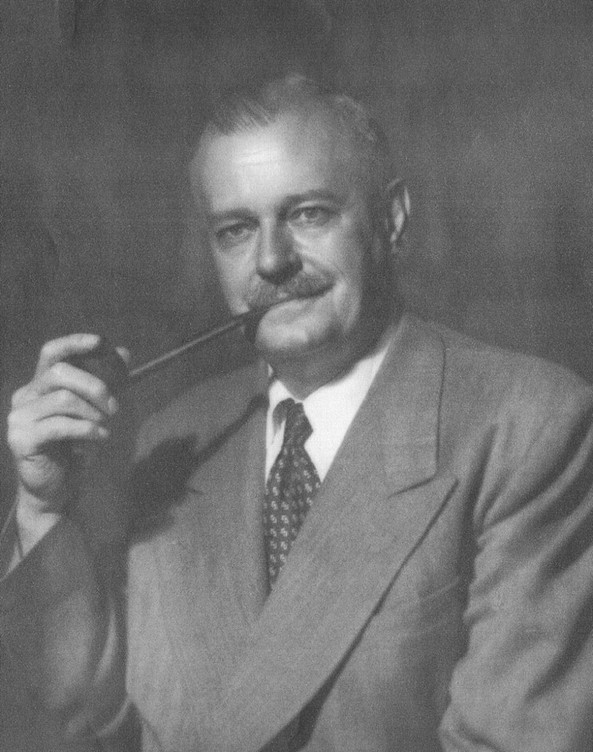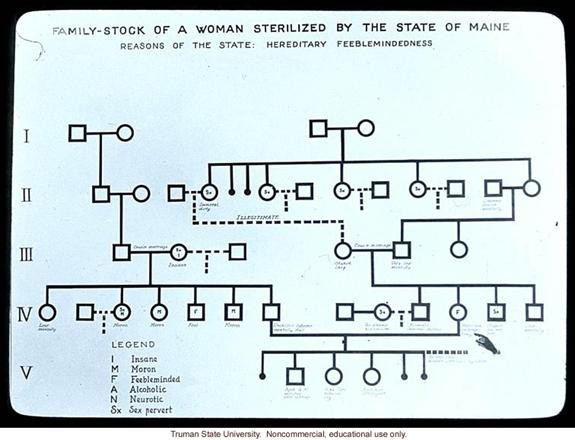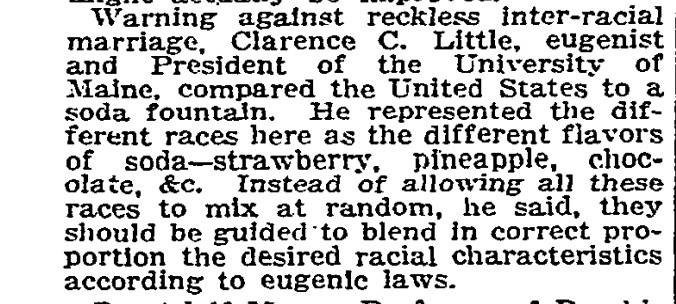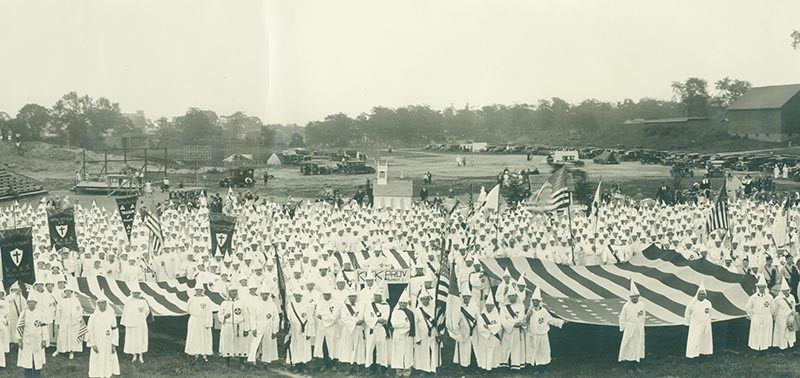UMaine's Ugly Ties to the Field of Eugenics and the KKK
Introduction
Text-to-speech Audio
Images
Dr. Clarence C. Little

Chart used in Maine about hereditary feeblemindedness

Excerpt of an article where Little uses a soda fountain analogy to highlight his eugenics theories about human reproduction.

Deforest Perkins, Class of 1900, was the future leader of the Maine's KKK klaverns

Image of KKK Field Day in Portland in 1926

Backstory and Context
Text-to-speech Audio
Not all hidden histories are stories worth celebrating. Between 1913 and 1930 the University of Maine offered courses on Eugenics, and employed numerous leading scholars in the field. While packaged as science to improve genetic quality, the theories of eugenics are often used to support the dominant population group. Those with nativist and racist views used this new science to argue for the sterilization and population control of Blacks, Native Americans, immigrants, the poor, disabled, and mentally ill. Hundreds of people were sterilized in Maine between the years of 1925-1963, and laws were enacted to limit certain portions of the population from marrying even, to further limit reproduction.
A great supporter of these theories was former University President Clarence C. Little, then the youngest university president in the nation. His three year term as president was described as “stormy.” Little openly promoted eugenics and euthanasia and was known for his research in these fields, speaking at conferences for “race betterment” and “race degeneracy.” He helped found the American Birth Control League, and served as President of the American Eugenics Society. Speaking at a birth control conference in 1925, Little compared the United States to a soda fountain, using flavors like pineapple, strawberry and chocolate to represent races. Using eugenic theories, he argued they should be blended in the correct proportions to reach the desired racial characteristics.
Little's research legacy remains complicated. Beyond his controversial theories about race, Little was also a spokesperson for the tobacco industry, and was paid to do research for them. He repeatedly doubled down on a false claim that genetics, and not smoking, was the main cause of Lung Cancer. Yet he still contributed much to the overall field of genetics, laying the groundwork for future scientists. Others working at Jackson Laboratory, which started under Little, have made numerous advances in the biomedical field, genetics, and Cancer research.
There has been a recent movement on campus to rename Little Hall. A task force was established to decide upon a more appropriate and deserving name. You can read the task force's recent report in the attached. resources. The University of Michigan also recently took Little’s name off of a building.
Little was not alone in these feelings. Racism and Nativism were spreading throughout America at this time. In 1923, the Bangor branch of the Ku Klux Klan alone had over 1500 members, with tens of thousands across the state. The Grand Dragon of the Maine KKK in the 1920s, DeForest Perkins, was a UMaine graduate (‘00), varsity football player and sophomore class president. Perkins was also president of the Maine Teacher’s Association, and served as Superintendent of both the Portland and Skowhegan school systems.
*Please note than the next stop on the tour is virtual only due to distance and lack of remaining structures. If you are taking this tour in person, we recommend finding.a comfortable spot on the mall to read about the fascinating history behind the next location.
Cite This Entry
Sieber, Karen . "UMaine's Ugly Ties to the Field of Eugenics and the KKK." Clio: Your Guide to History. April 5, 2021. Accessed April 2, 2025. https://theclio.com/entry/129845
Sources
"A Chilling Normality: Ku Klux Klan in Maine," Maine Historical Society, Fall 2014, p. 9.
Franks, Angela. Margaret Sanger's Eugenic Legacy: The Control of Female Fertility. McFarland, 2005.
Leland L. Glenna, Margaret A. Gollnick and Stephen S. Jones. 2007. “Eugenic Opportunity Structures: Teaching Genetic Engineering at US Land-Grant Universities since 1911.” Social Studies of Science 37, 2: 281-96.
Little, C. C. "BOLSHIVIK GENETICS." Journal of Heredity 26, no. 11 (1935): 453-454.
Little, Clarence Cook. "The second international congress of eugenics." The Eugenics Review 13, no. 4 (1922): 511.
University of Maine, "C.C. Little Hall Name Task Force Final Report" (2020). University of Maine Racial Justice Collection. 88.
University of Maine, Prism (yearbook), University of Maine, 1909.
Jackson Laboratory
Truman State University
New York Times, March 29, 1925
University of Maine Prism Yearbook
Maine Historical Society

